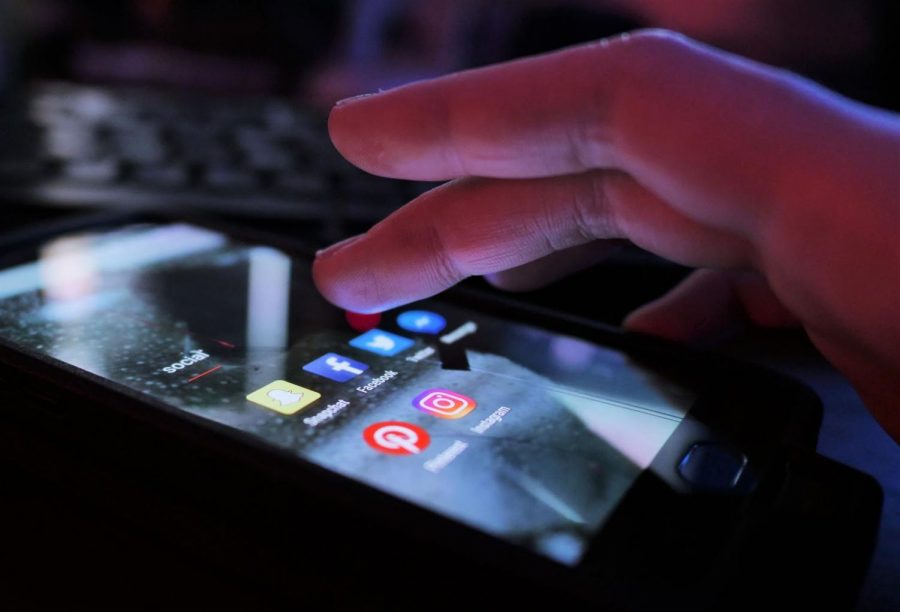How Social Media is Affecting Opinions Surrounding COVID-19
Social media apps such as TikTok and Instagram are filled with videos and posts surrounding feelings towards social distancing and school closures. Creative Commons image: Julia Roberts on Pexels.
April 2, 2020
As students and teachers across the country adjust to school closures and quarantines, social media apps such as TikTok are filled with videos and posts surrounding feelings towards social distancing and school closures. Are the increasing number of posts about the virus and its effects changing students and teachers’ opinions on the situation?
Junior Danielle McNair says there are many dances, skits and videos about COVID-19 on TikTok. “They aren’t really spreading any awareness. Unfortunately, most of them are dances to the [It’s Corona Time] song […] just making fun of the idea of social distancing or the fact that stores are empty,” McNair said in an email to The Coat of Arms. Along with TikTok, other social media sites are also filled with content relating to COVID-19. “My feed is largely composed of academics and educators, so there’s been a tone of concern, exhaustion and desire for activism, rather than disappointment about specific losses,” Blumenthal said in an email to the Coat of Arms.
The first three days of school closure due to COVID-19 (March 4-6) excited many people simply because it was an unexpected break from school, but the extended closure hasn’t had the same effect. “Even after the first two professional development days of online school, I was so bored,” McNair said. “I also miss getting to see my friends every day and do normal teenager things.” Similar to McNair, sophomore Jaymin Parasnis misses school, mainly because of boredom and not seeing his friends; however, Parasnis does see some silver linings in social distancing and online school. “I have had more family bonding time, and online school is pretty relaxing because I can work at my own pace,” Parasnis said.
An increase in free time at home for both students and teachers has also changed daily routine. “I’m over-screened and under-exercised. I miss friends and students,” English teacher Blumenthal said. “But [I feel] relief that we are participating in a socially responsible move to protect vulnerable people from this illness.”
Whether originally feeling excitement or sadness towards the extended school closures and the recent shelter-in-place, students and teachers agree that what they see on social media can change their feelings towards the situation. “[The posts] have made me realize that I am going to get really bored really quickly,” Parasnis said. McNair thinks that seeing the posts damper her mood as the reality sets in. “It more just bums me out. […] It’s a weird time and it feels like TikTok is reinforcing that over and over,” McNair said.
Younger generations on social media tend to use use dark humor in their posts and videos about COVID-19 and social distancing (https://menlocoa.org/18492/a-and-l/students-cope-with-reality-through-memes-and-dark-humor/). “I think [people] are definitely being insensitive. I think it’s hard to comprehend for people who are not affected,” McNair said. Parasnis agrees that social media posts can be insensitive. He thinks a lot of it is motivated by wanting to get more views and likes. “Mainly because [COVID-19 posts] are one way to get on the ‘for you page’ and get ‘famous,’” Parasnis said.
The light-hearted nature of the posts about COVID-19 has also helped McNair realize the severity of the situation, especially if people continue to approach the pandemic as a joke. “It’s not everyone’s reality [right now], but it may be one day soon if people do not take the entire situation we are living through seriously,” McNair said.



